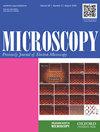Histochemical assessment on the cellular interplay of vascular endothelial cells and septoclasts during endochondral ossification in mice
IF 1.8
4区 工程技术
引用次数: 9
Abstract
This study was aimed to verify the cellular interplay between vascular endothelial cells and surrounding cells in the chondro-osseous junction of murine tibiae. Many CD31-positive endothelial cells accompanied with Dolichos Biflorus Agglutinin lectin-positive septoclasts invaded into the hypertrophic zone of the tibial epiphyseal cartilage. MMP9 immunoreactive cytoplasmic processes of vascular endothelial cells extended into the transverse partitions of cartilage columns. In contrast, septoclasts included several large lysosomes which indicate the incorporation of extracellular matrices despite no immunopositivity for F4/80—a hallmark of macrophage/monocyte lineage. In addition, septoclasts were observed in c-fos -/- mice but not in Rankl -/- mice. Unlike c-fos -/- mice, Rankl -/- mice showed markedly expanded hypertrophic zone and the irregular shape of the chondro-osseous junction. Immunoreactivity of platelet-derived growth factor-bb, which involved in angiogenic roles in the bone, was detected in not only osteoclasts but also septoclasts at the chondro-osseous junction. Therefore, septoclasts appear to assist the synchronous vascular invasion of endothelial cells at the chondro-osseous junction. Vascular endothelial cells adjacent to the chondro-osseous junction possess endomucin but not EphB4, whereas those slightly distant from the chondro-osseous junction were intensely positive for both endomucin and EphB4, while being accompanied with ephrinB2-positive osteoblasts. Taken together, it is likely that vascular endothelial cells adjacent to the chondro-osseous junction would interplay with septoclasts for synchronous invasion into the epiphyseal cartilage, while those slightly distant from the chondro-osseous junction would cooperate with osteoblastic activities presumably by mediating EphB4/ephrinB2. Mini-abstract Our original article demonstrated that vascular endothelial cells adjacent to the chondro-osseous junction would interplay with septoclasts for synchronous invasion into the epiphyseal cartilage, while those slightly distant from the chondro-osseous junction would cooperate with osteoblastic activities presumably by mediating EphB4/ephrinB2. (A figure that best represents your paper is Fig. 5c)组织化学评价小鼠软骨内骨化过程中血管内皮细胞和破隔膜细胞的相互作用
本研究旨在验证小鼠胫骨软骨-骨连接处血管内皮细胞和周围细胞之间的细胞相互作用。许多CD31阳性的内皮细胞伴随着Dolichos Biflorus凝集素阳性的隔膜破坏者侵入胫骨骨骺软骨的肥大区。MMP9免疫反应阳性的血管内皮细胞胞质突起延伸到软骨柱的横向分区。相反,尽管F4/80没有免疫阳性,但破隔膜剂包括几个大的溶酶体,这表明细胞外基质的结合——这是巨噬细胞/单核细胞谱系的标志。此外,在c-fos小鼠中观察到了隔膜破坏剂,但在Rankl-/-小鼠中没有观察到。与c-fos小鼠不同,Rankl-/-小鼠的肥大区明显扩大,软骨-骨连接处形状不规则。参与骨血管生成作用的血小板衍生生长因子bb的免疫反应性不仅在破骨细胞中检测到,而且在软骨-骨连接处的破隔膜细胞中也检测到。因此,破隔膜剂似乎有助于软骨-骨交界处内皮细胞的同步血管侵袭。软骨-骨交界处附近的血管内皮细胞具有内粘蛋白,但不具有EphB4,而那些稍微远离软骨-骨接合处的细胞对内粘蛋白和EphB4均呈强阳性,同时伴有ephrinB2阳性的成骨细胞。总之,软骨-骨交界处附近的血管内皮细胞可能会与破隔膜细胞相互作用,同步侵入骨骺软骨,而那些稍微远离软骨-骨接合处的细胞可能会通过介导EphB4/ephrinB2与成骨细胞活性协同作用。迷你摘要我们的原始文章证明,软骨-骨交界处附近的血管内皮细胞将与破隔膜细胞相互作用,同步侵入骨骺软骨,而那些离软骨-骨接合处稍远的细胞可能通过介导EphB4/ephrinB2与成骨细胞活动协同作用。(最能代表你论文的数字是图5c)
本文章由计算机程序翻译,如有差异,请以英文原文为准。
求助全文
约1分钟内获得全文
求助全文
来源期刊

Microscopy
工程技术-显微镜技术
自引率
11.10%
发文量
0
审稿时长
>12 weeks
期刊介绍:
Microscopy, previously Journal of Electron Microscopy, promotes research combined with any type of microscopy techniques, applied in life and material sciences. Microscopy is the official journal of the Japanese Society of Microscopy.
 求助内容:
求助内容: 应助结果提醒方式:
应助结果提醒方式:


